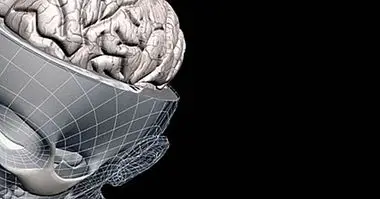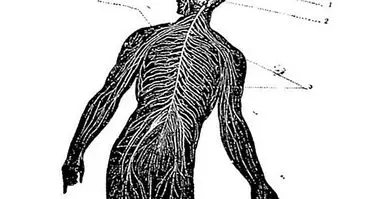Somatization: what is it and what symptoms does it produce?
Historically, many psychological theories treat the body and the mind as if they were two distinct entities that only associate in some aspects to allow the existence of human beings conscious of themselves and fully functional. Interestingly, from these approaches the "material" body of people only has power over the mind in the aspect of retaining it in a specific place and, for the rest, it is the mind that proposes objectives, controls the movements of the body and , from time to time, he looks for ways to transcend his "flesh prison".
Today both psychology and, of course, psychiatry tend increasingly to obviate the existence of a "mind" independent of the material body, but curiously, and despite the scientific and technical advances of recent decades, there are certain mental disorders that seem to claim the existence of a disembodied psychological aspect , even though we know that is impossible. An example of this is offered by a phenomenon called somatization.
Understanding the concept of somatization
The somatization is a set of physical symptoms that produce discomfort and that can not be medically explained from a body review . That is to say, that where there is a somatization there are problems related to pain and discomfort to which a cause can not be found from a medical examination.
Due to the difficulties in finding the source of the problem, diagnosis care and treatments usually fall on the Somatic Nervous System , that is, the part of the nervous system that carries sensory information and serves as a channel for the electrical impulses that activate the musculature.
What is the cause of the somatizations?
Somatizations often make up a kind of "catch-all" of the diagnostic criteria, since they often serve to create categories that include certain problems that are not well known why they are produced. This should not be surprising, given that the range of symptoms under which a disorder may appear that fits the definition of "somatization" is very broad, and placing the origin of a disease in the functioning of the nervous system always causes more problems than locating it. in very specific parts of the body, such as certain areas of cellular tissue or organs.
In addition, manuals with criteria for diagnosing cases of somatizations almost always include the condition that these symptoms can not be satisfactorily explained by another disorder or disease.
Somatizations are, therefore, difficult to explain if you want to isolate in a laboratory the cause of all the physical and psychological complications that produce , but some time ago they began to study and document. For this reason it is normal that for a time they were associated with what in psychoanalysis was known as hysteria, and that even today it is believed in certain academic circles that somatizations are the consequence of certain psychological problems that struggle to get out of the Unconscious.
What people usually develop them?
By statistics, women are a little more likely to somatize than men , and normally this happens for the first time during youth, before the age of 30. In addition, correlations have been found between the fact of leading a life linked to severe stressors, which explains why the most impoverished population with fewer studies is especially susceptible to experiencing cases of somatization.
This last datum can serve to suggest that somatizations have a situational component, and that therefore to study them one must understand not only the individual, but also their relationship with the environment.
How are they usually expressed?
The most common somatizations are related to sexual problems (such as pain during penetration or erectile dysfunction), continued headaches and joint pains. However, as we have seen, there are many symptoms that can fit into what we know as somatization.
And how is a case of somatization treated?
Everything related to the nervous system must be treated from an approach that covers both the psychological and behavioral aspects of the person and the physical phenomena directly addressed in the patient's body. That is why it is worth medically monitoring the evolution of somatization while providing Cognitive-Behavioral Therapy.



















